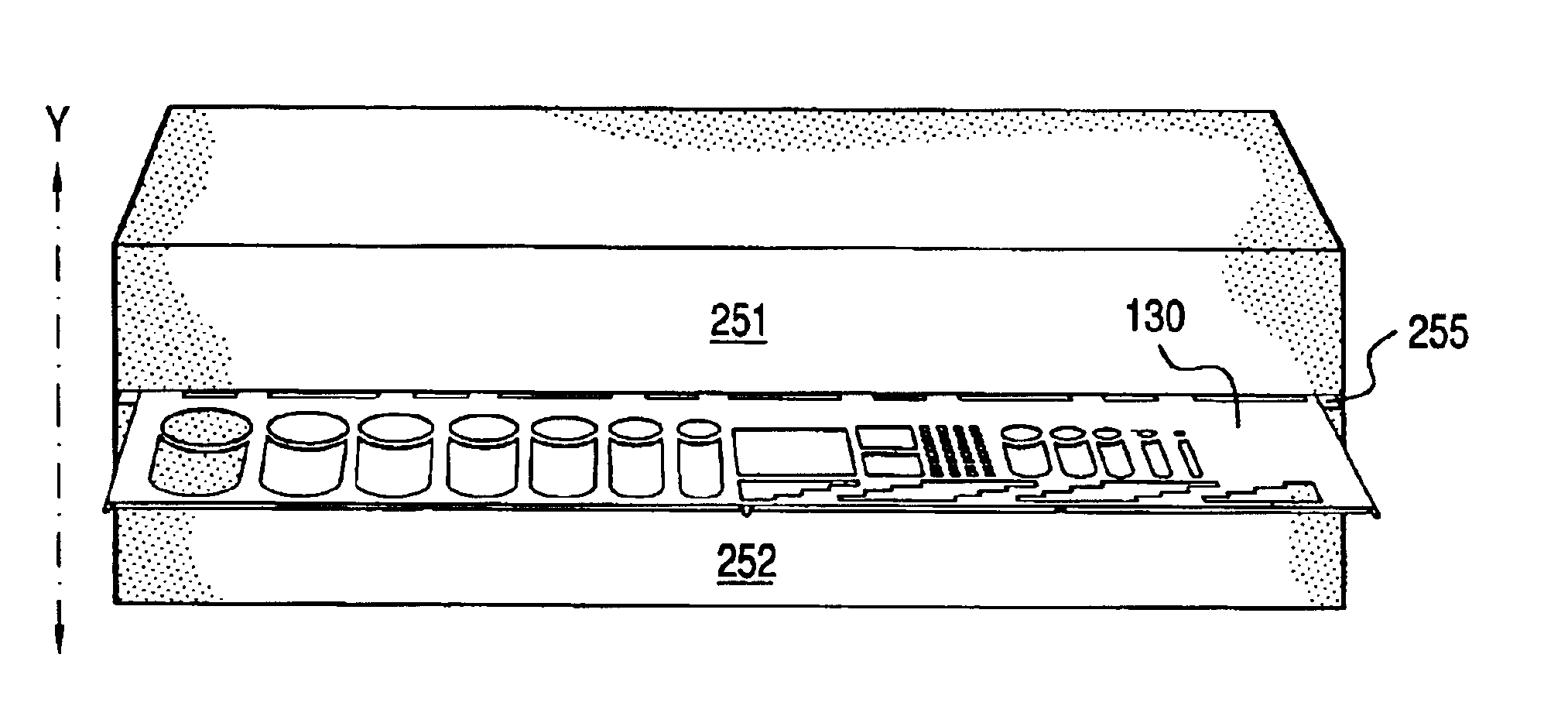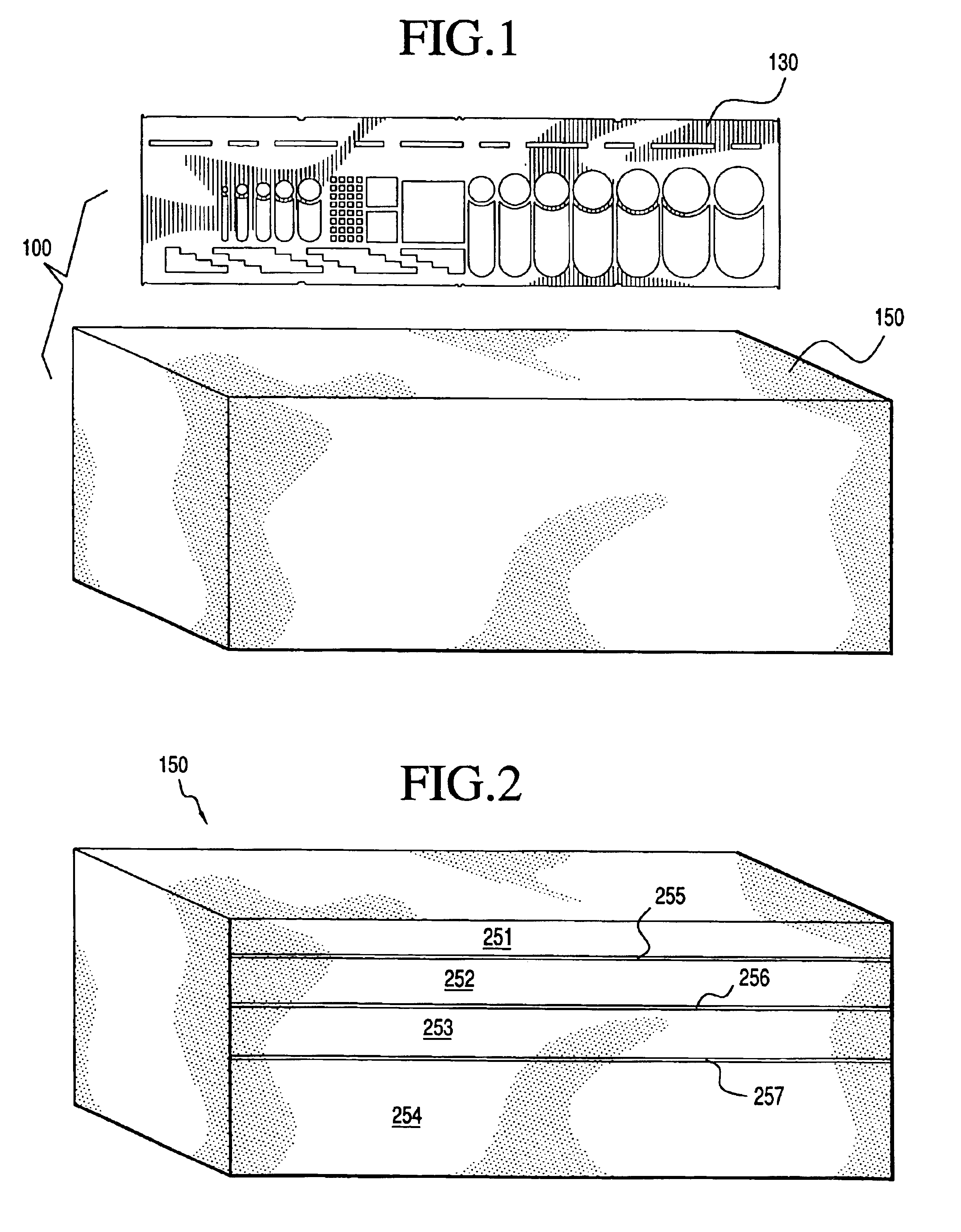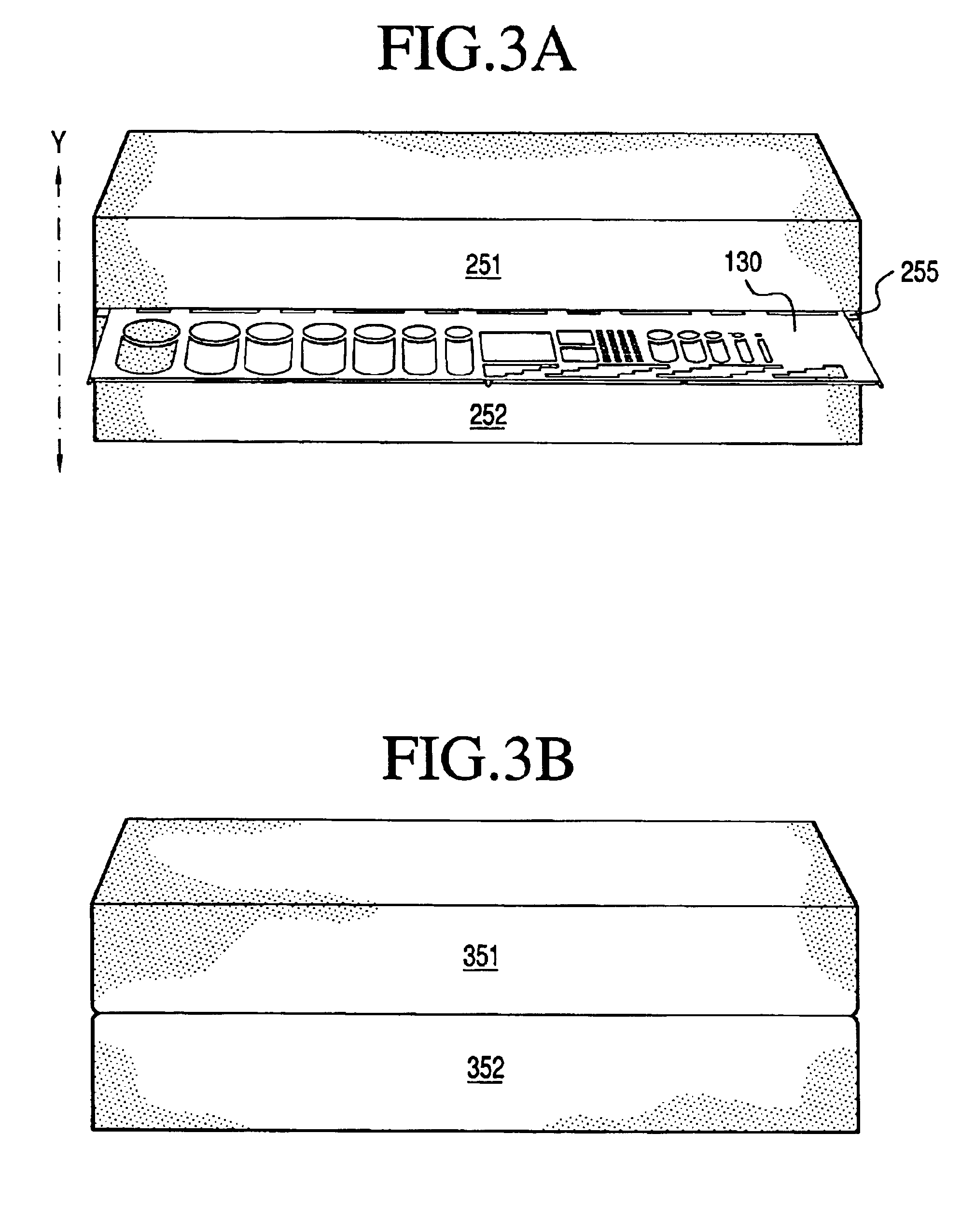Method and apparatus for measuring a intracorporal passage image
a technology of intracorporal passage and measurement method, which is applied in the field of medical surgical procedures, can solve the problems of narrowing of the lumen of these blood vessels, leakage around the catheter, and variety of complications, and achieve the effect of accurately measuring, accurately determining, and accurately determining size/dimension
- Summary
- Abstract
- Description
- Claims
- Application Information
AI Technical Summary
Benefits of technology
Problems solved by technology
Method used
Image
Examples
Embodiment Construction
FIG. 1 illustrates the exemplary medical measuring apparatus 100. The apparatus 100 preferably includes a measuring adjunct 130 and an object to image retainer 150 in accordance with the illustrated embodiment of the present invention. In the embodiment depicted in FIG. 1, the object to image retainer 150 is a pad. As will be described below, however, in alternative embodiments, the object to image retainer 150 is not necessarily a pad. It should also be noted that in at least one embodiment of the invention, the object to image retainer 150 may be a mechanically / hydraulically controlled device for adjusting the height of the measuring adjunct 130. In another embodiment, the object to image retainer 150 may not be present. In such an embodiment, the medical measuring apparatus 100 includes only the measuring adjunct 130.
In the embodiment of the invention depicted in FIG. 1, a medical professional operates the medical measuring apparatus 100 preferably by placing the measuring adjunc...
PUM
 Login to View More
Login to View More Abstract
Description
Claims
Application Information
 Login to View More
Login to View More - R&D
- Intellectual Property
- Life Sciences
- Materials
- Tech Scout
- Unparalleled Data Quality
- Higher Quality Content
- 60% Fewer Hallucinations
Browse by: Latest US Patents, China's latest patents, Technical Efficacy Thesaurus, Application Domain, Technology Topic, Popular Technical Reports.
© 2025 PatSnap. All rights reserved.Legal|Privacy policy|Modern Slavery Act Transparency Statement|Sitemap|About US| Contact US: help@patsnap.com



